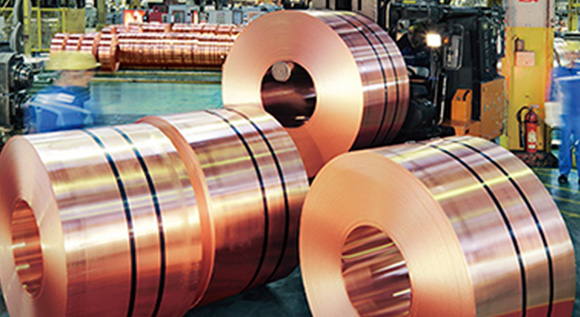Copper producer delivers heat for an entire city district
Soon, heating for the HafenCity Ost port district in Hamburg will almost completely be supplied using waste heat from the production of copper. This saves around 20,000 tonnes of carbon emissions per year. The Federal Ministry for Economic Affairs and Energy is supporting this lighthouse project.
 © Aurubis AG
© Aurubis AG
One of Germany's largest lighthouse projects for the utilisation of industrial waste heat has been given the go-ahead. Copper producer Aurubis AG and energy service provider enercity Contracting Nord GmbH have recently signed a contract for the supply of industrial waste heat. This energy, which has hitherto remained unused, is to be utilised to heat the Hamburg port quarter HafenCity Ost. The project is setting new standards for heat supply in cities. It is being funded with €8 million from the Waste Heat Energy Efficiency Programme run by the Federal Ministry for Economic Affairs and Energy (BMWi).
Waste heat not utilised until now
Copper producer Aurubis is one of the most energy-intensive industrial companies in Germany. The company will extract heat that is formed when sulphur dioxide – a by-product of copper smelting – is converted into sulfuric acid. It has not been possible to use this heat energy until now. This is to change in spring 2018, when a total of 160,000 megawatt hours of waste heat will be made usable for heating purposes. Three quarters of the amount will be used to provide district heating for 6,000 Hamburg households, with the remaining quarter being used by Aurubis for internal processes. Some 32,000 tons of carbon emissions can be eliminated in this way – 20,000 tons as a result of the utilisation of waste heat in the Hafencity district, and 12,000 tons by using the industrial waste heat in the plant itself.
Until then, a number of construction measures need to be implemented. Aurubis will deliver its waste heat up to the point where it leaves the plant. The company has to convert its contact plant, in which the gaseous sulphur dioxide that accumulates in the process is transformed into liquid sulfuric acid, and to establish a line to deliver the heat on its premises. From there, enercity Contracting Nord will transport the heat energy to the HafenCity. For this purpose, it is building a new district heating line and an energy centre.
Yet, the potential for using waste heat in the Aurubis plant in Hamburg is far from being exhausted. The contact plant consists of three lines. About 160 million kilowatt hours (kWh) can be extracted from each individual line annually, for a total of nearly 500 million kWh. The heat from one line is sufficient to supply Hafencity East, which is why only one line will be converted initially. The company is currently evaluating to what extent it will be able to supply heat energy to other city districts.
Funding also available for small companies
It is hoped that the Hamburg project will encourage other companies to follow suit – and not just on such a large scale. The German Energy Agency (dena) has selected the project as one of ten lighthouse projects for energy-efficient waste heat utilisation.

